Acer Swift 3 (2020) review: Stunning speed, mediocre elsewhere
Acer deploys an AMD CPU to provide huge performance, but this machine suffers in other areas
-
+
Fantastic AMD CPU
-
+
Lightweight design
-
+
Cheaper than most rivals
-
-
Underwhelming screen
-
-
Mediocre ergonomics
-
-
Missing features
-
-
Average build quality

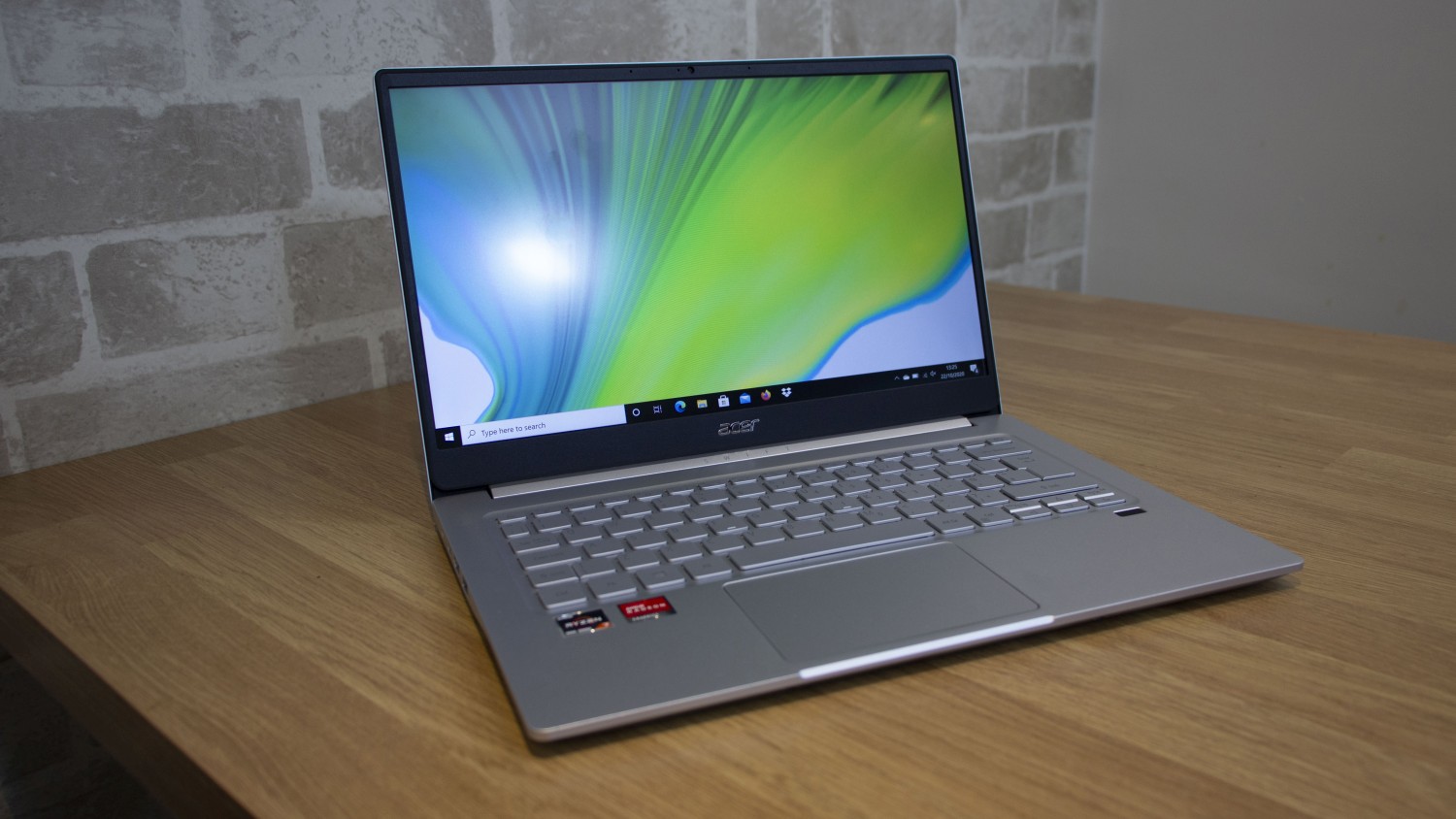
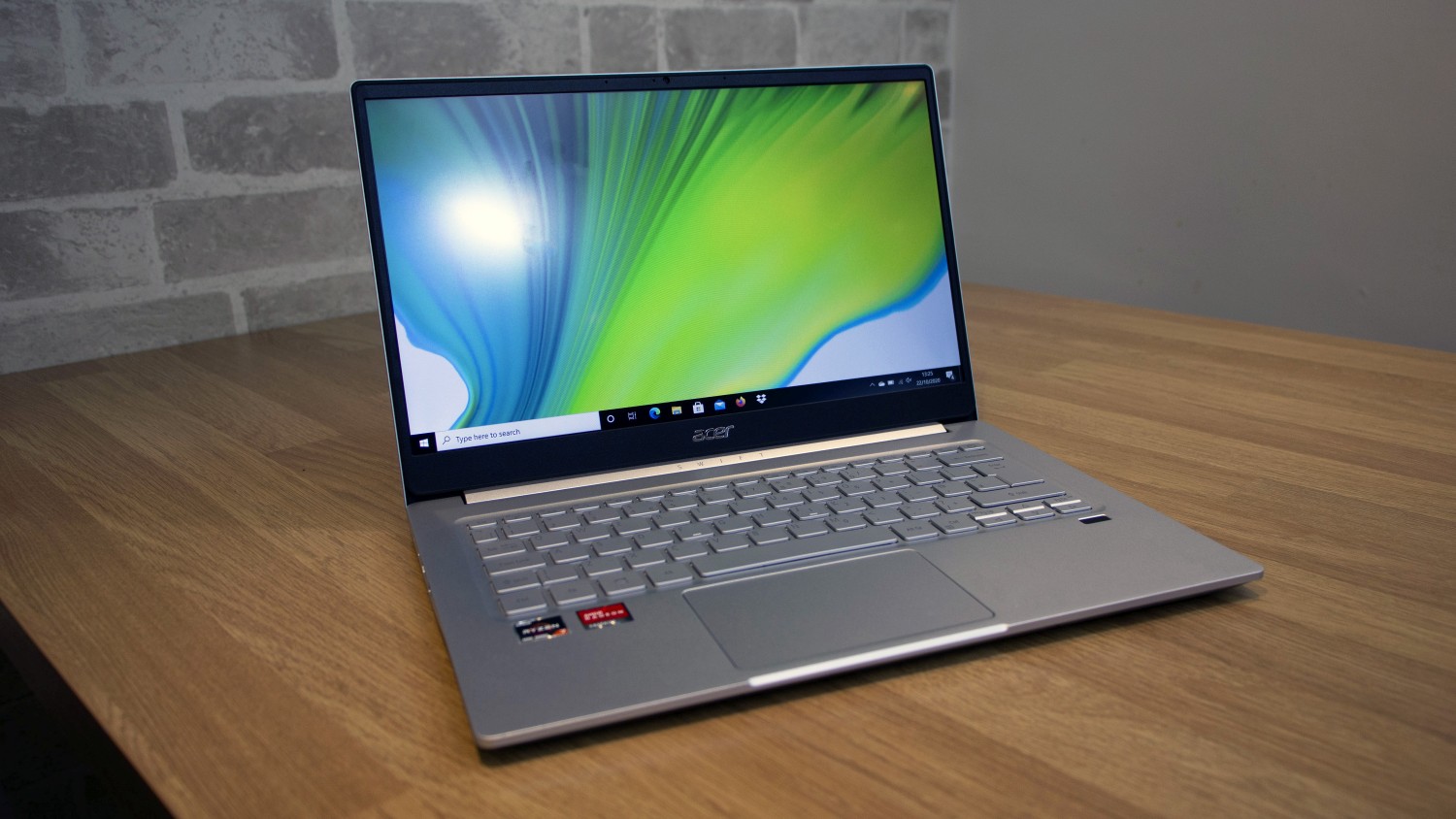
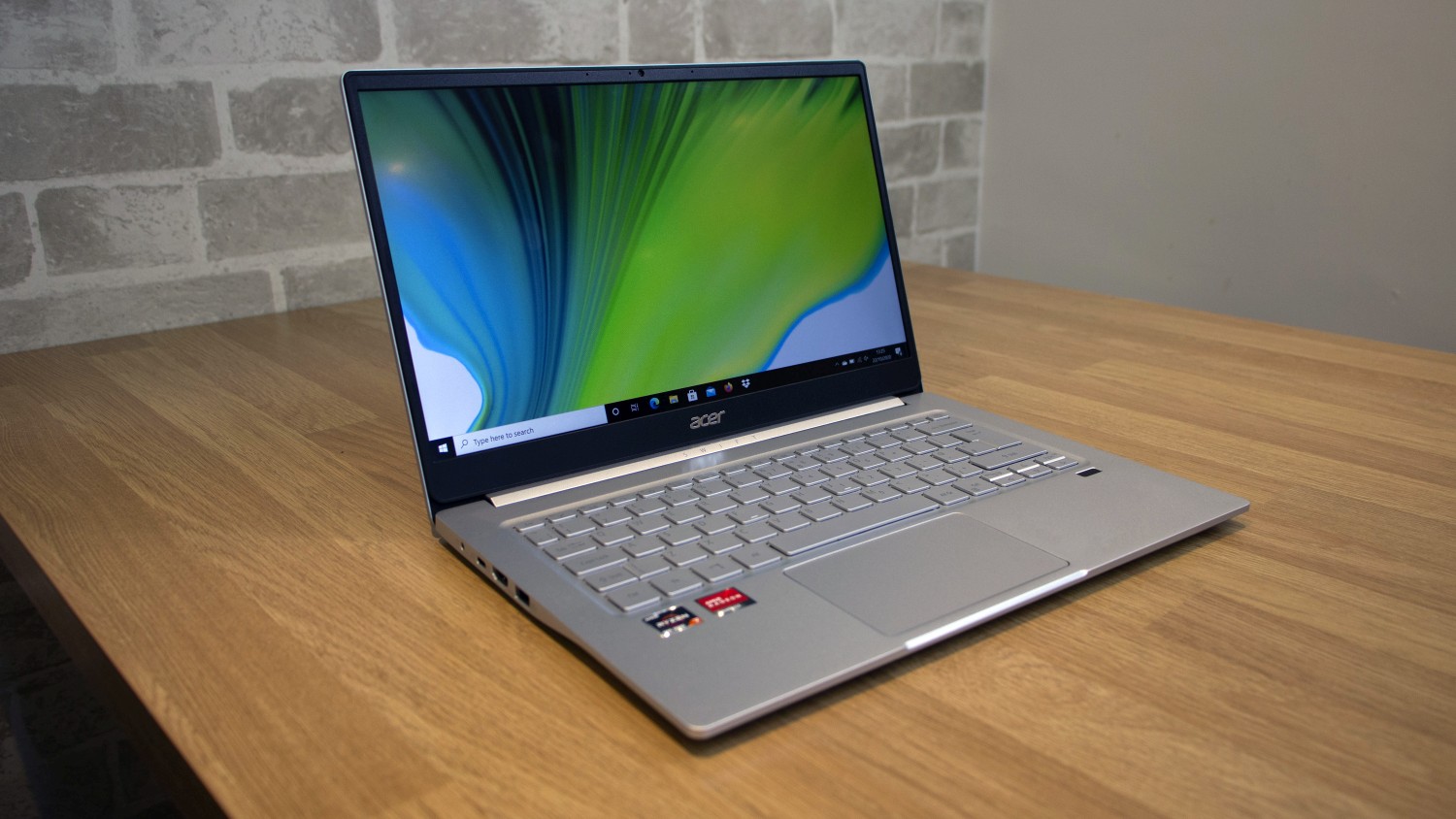
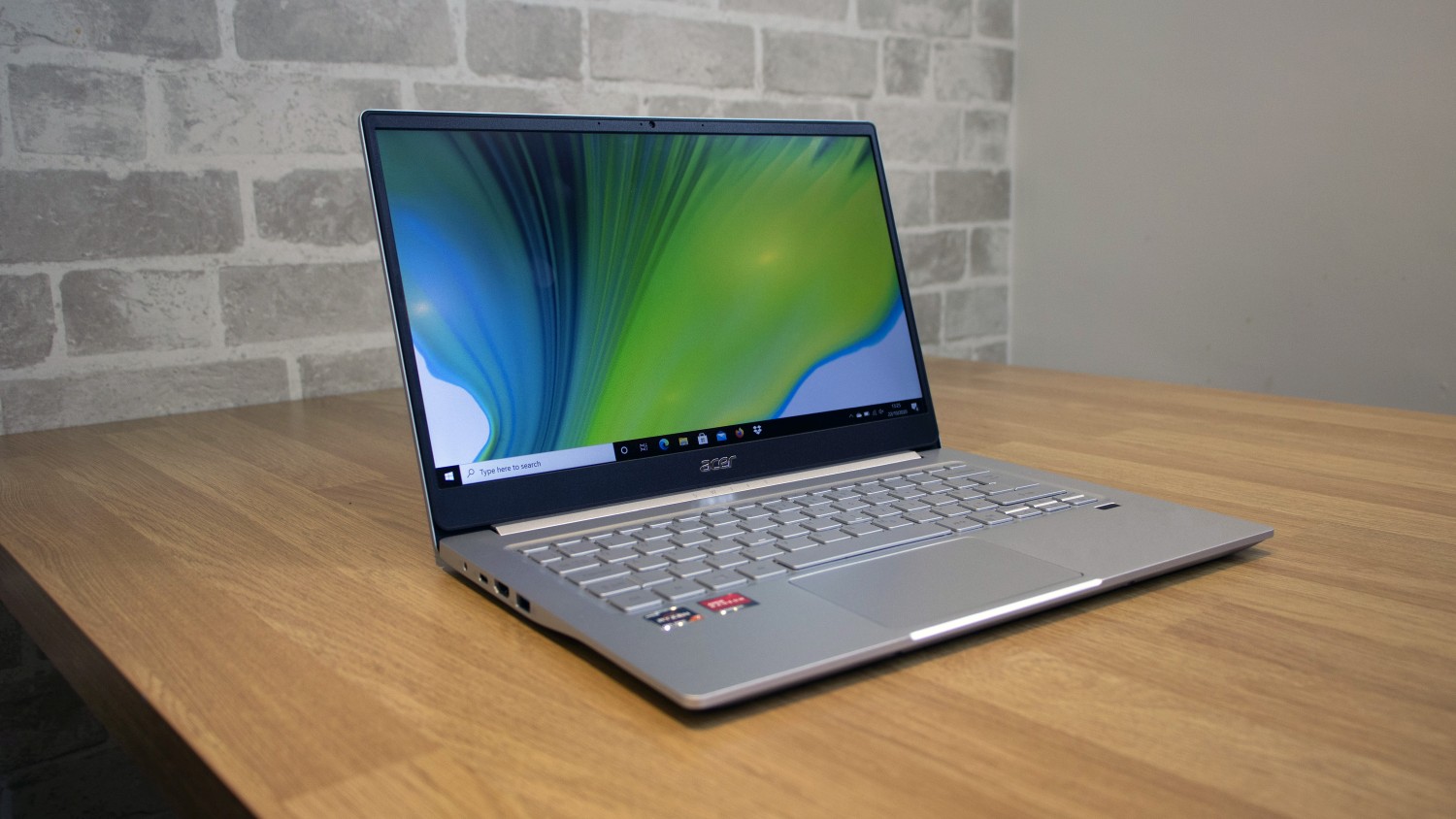
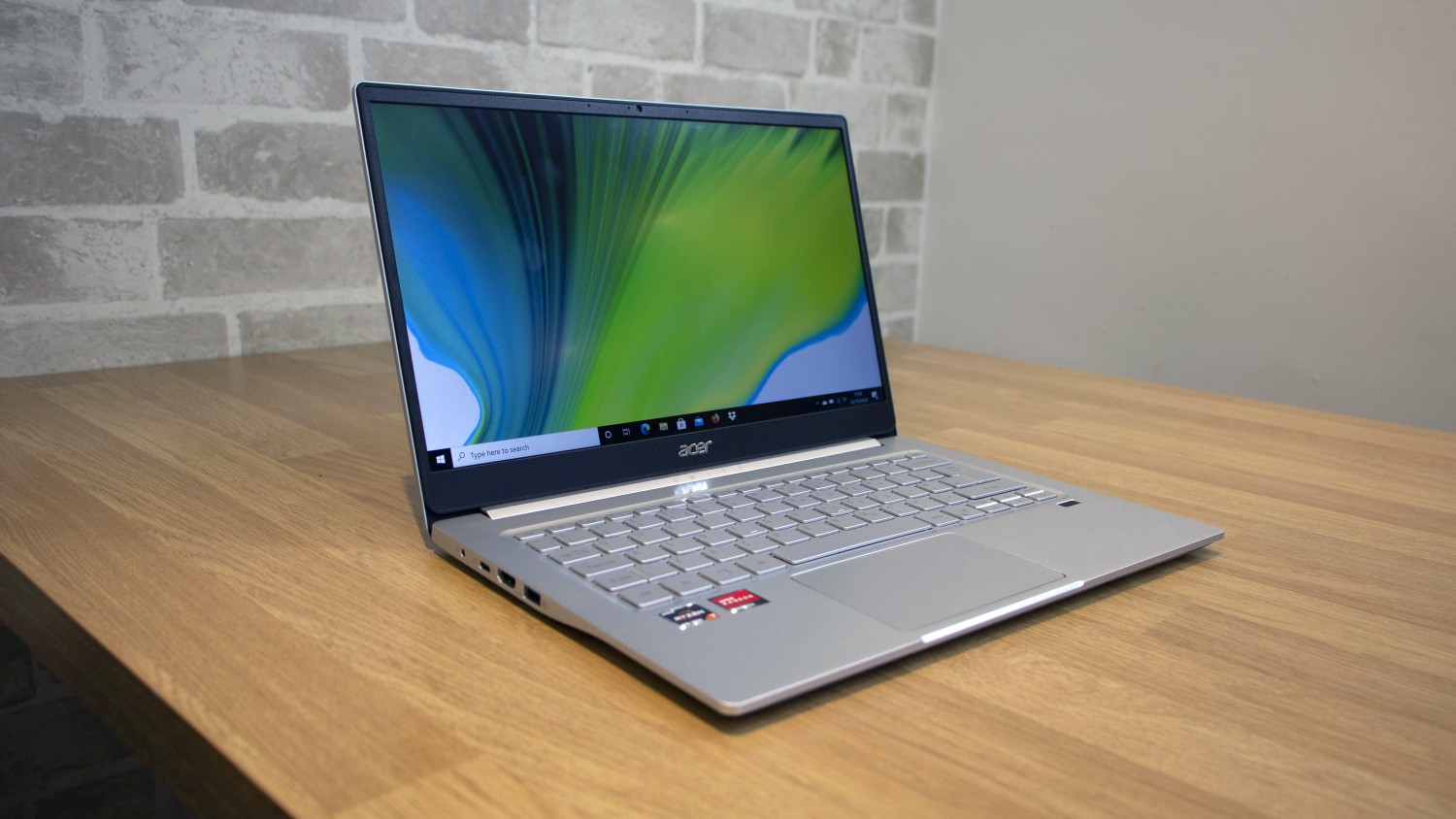
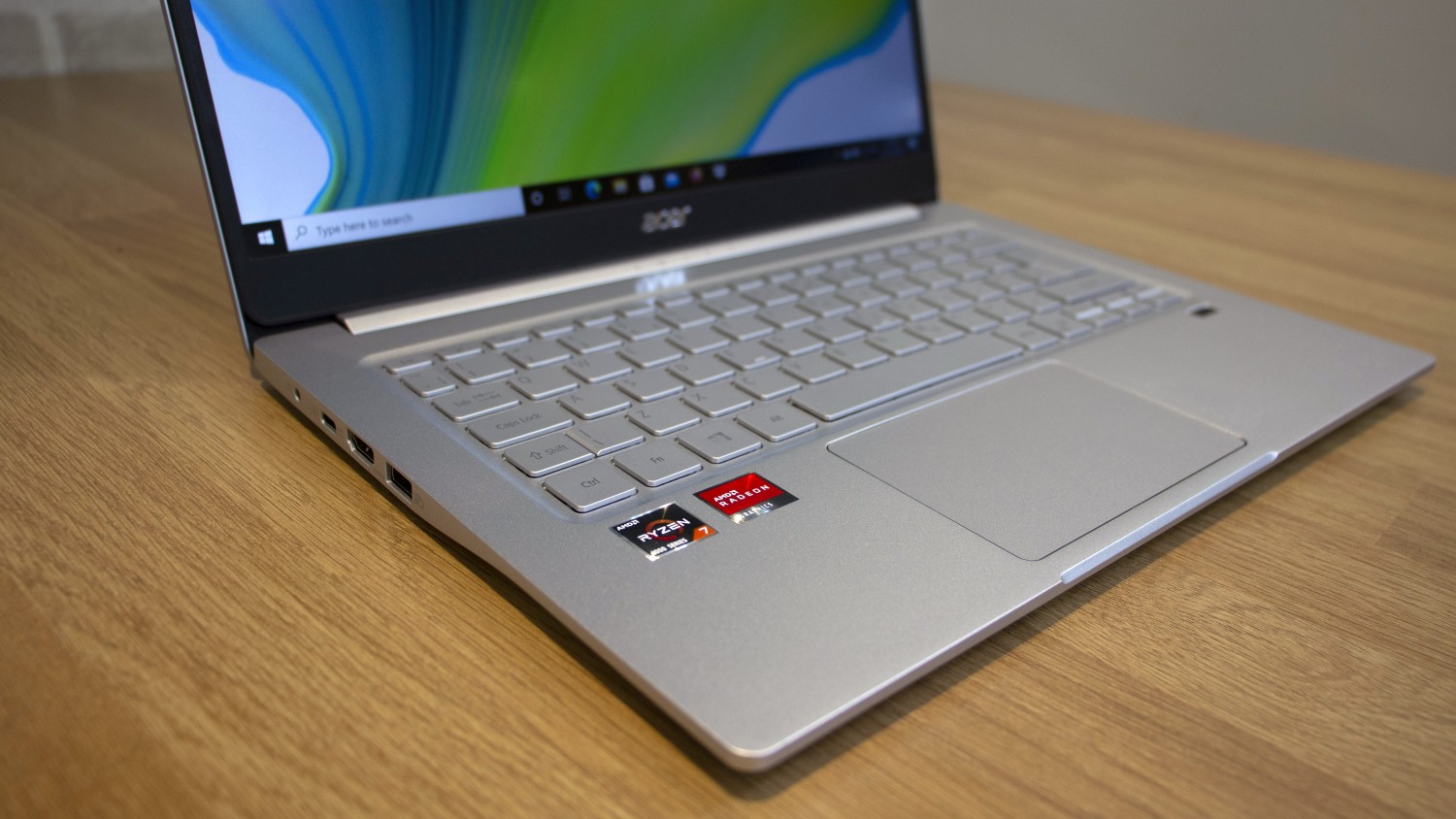
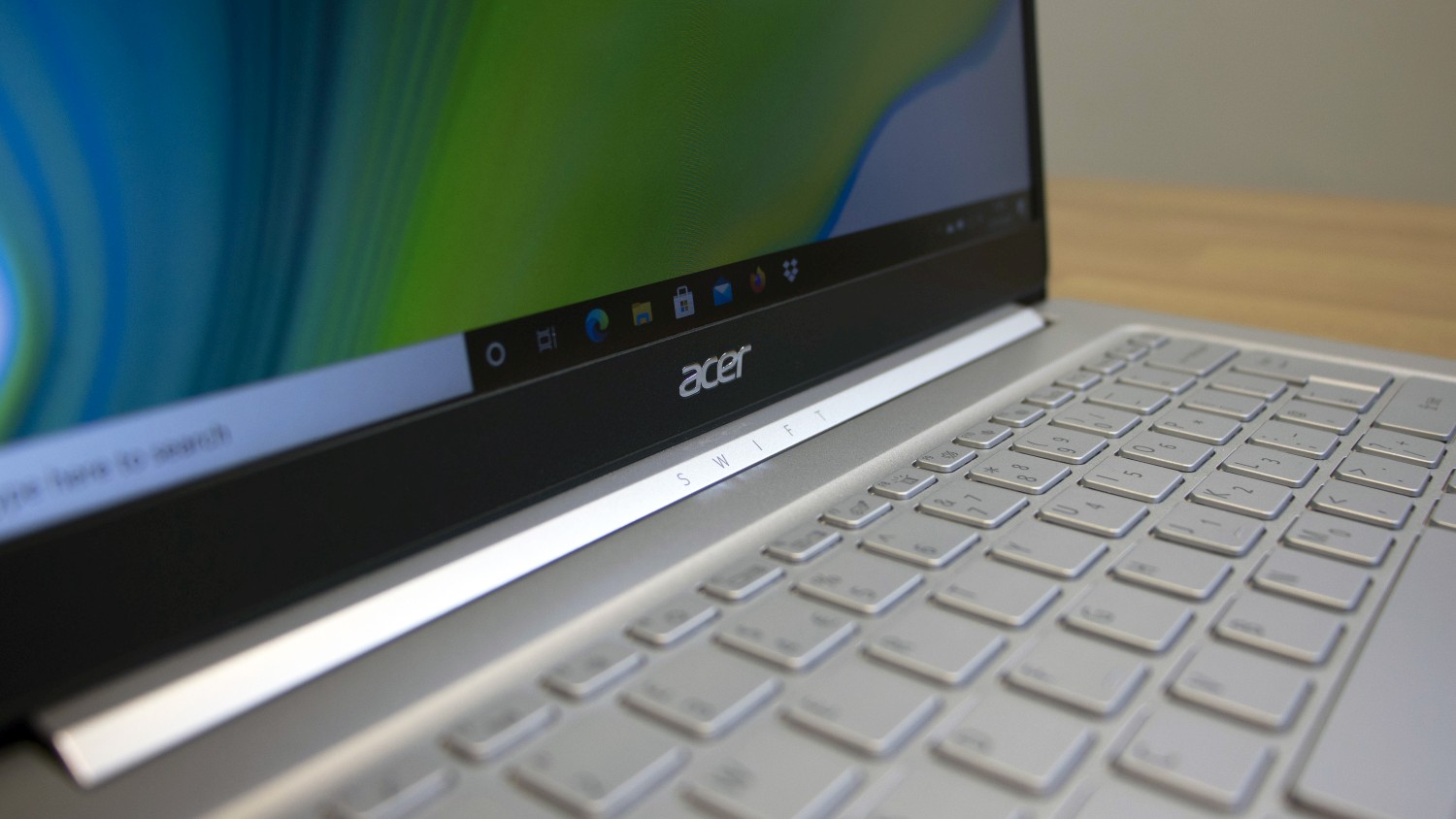
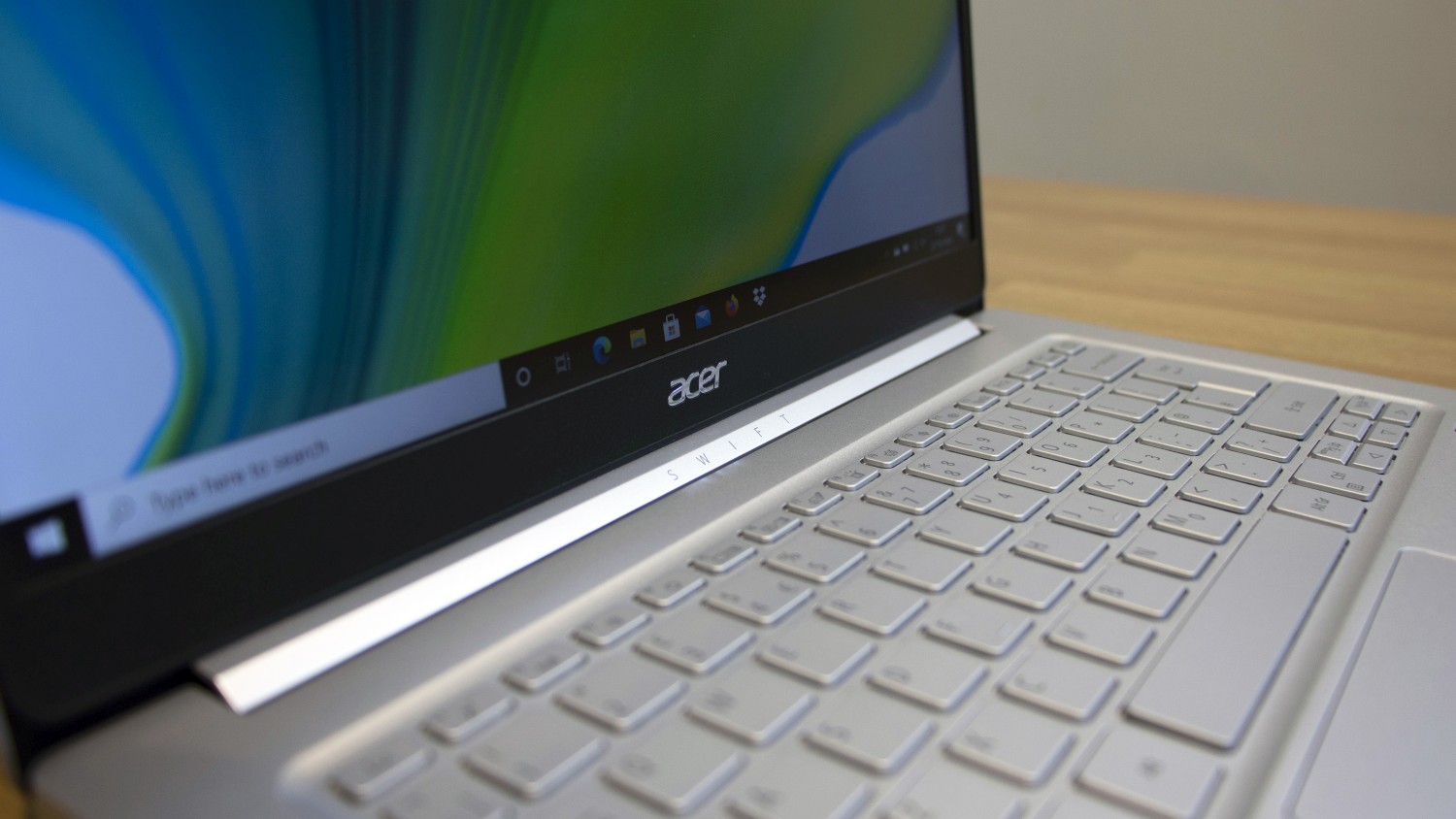
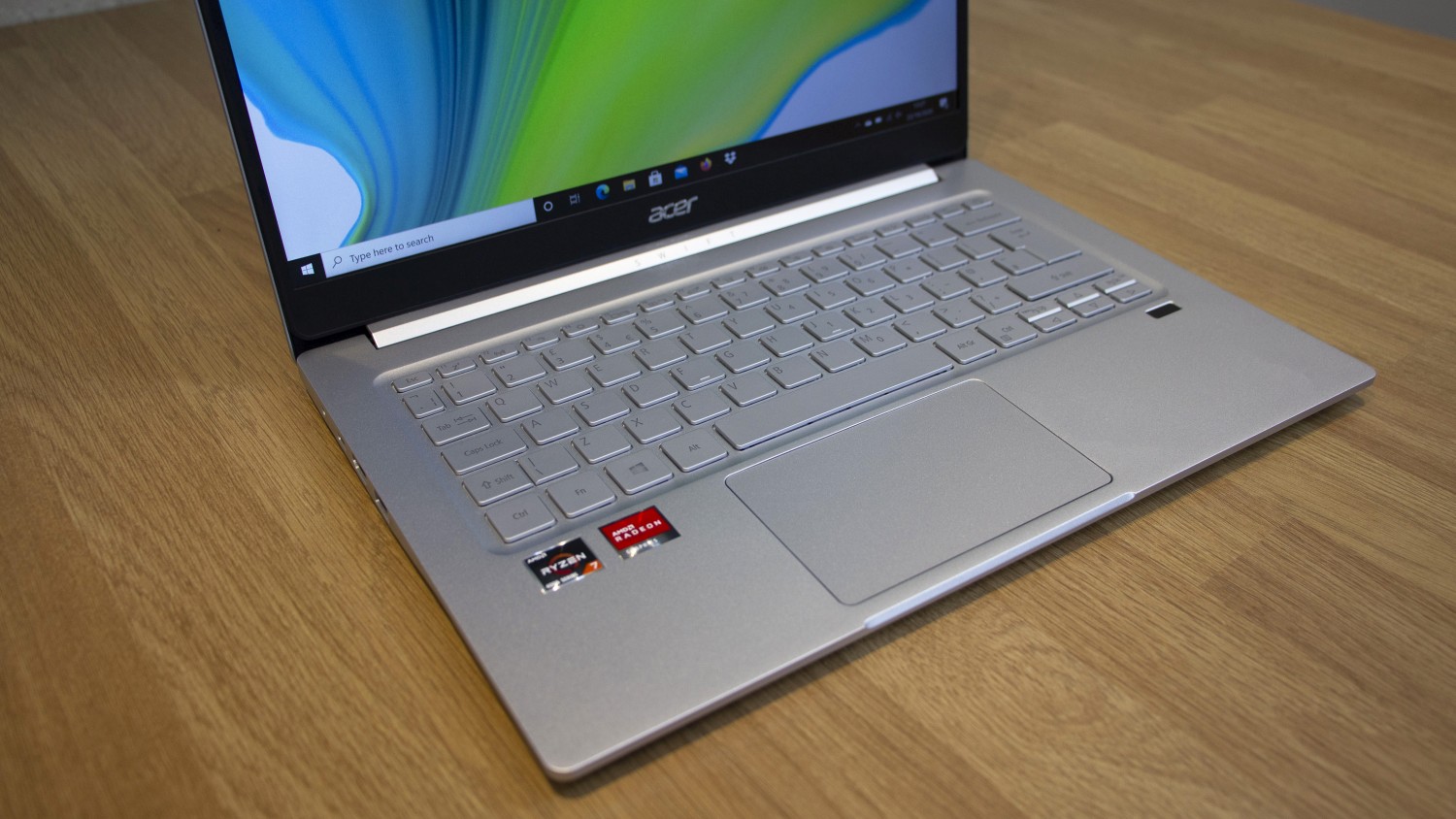
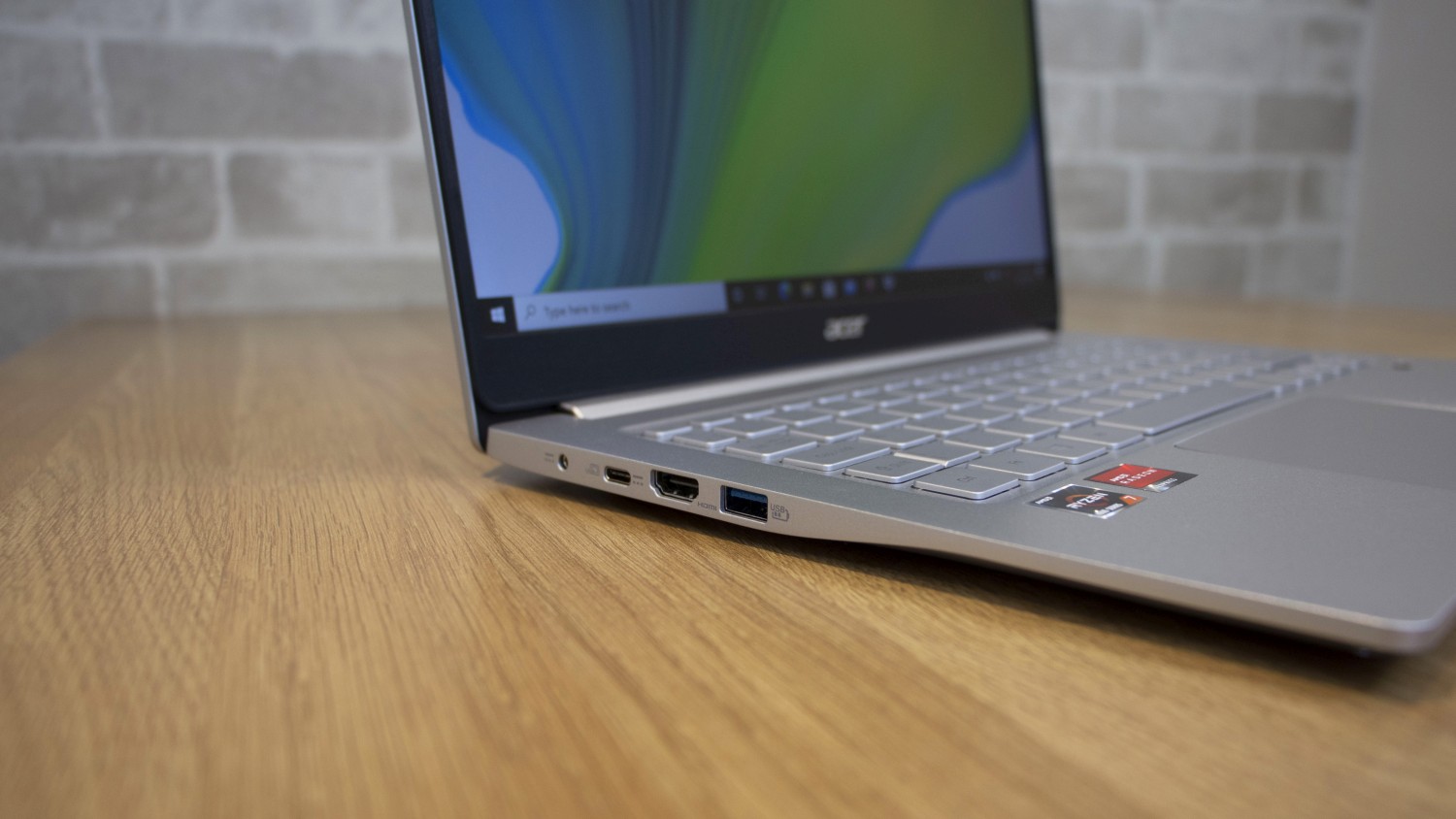
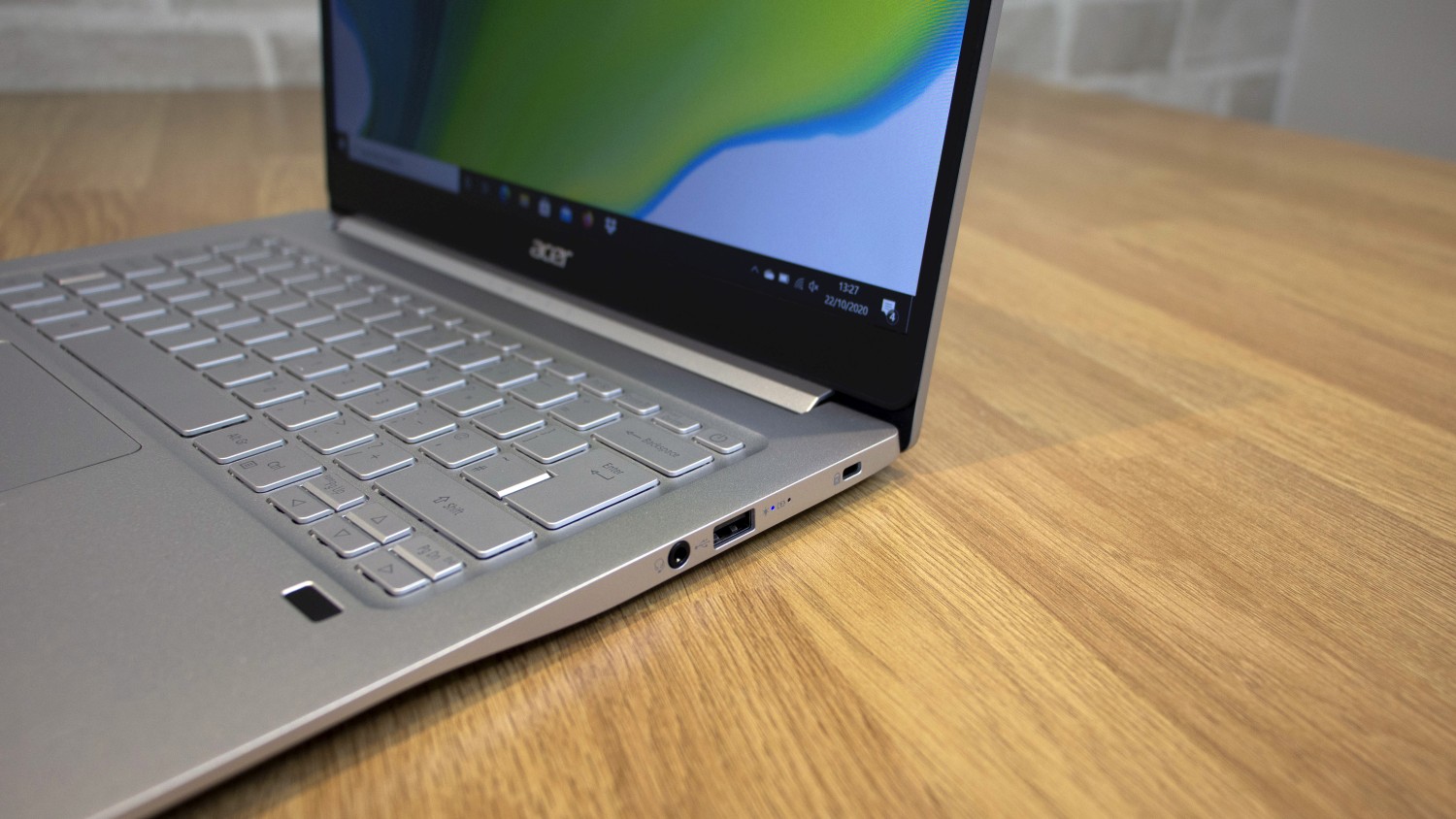
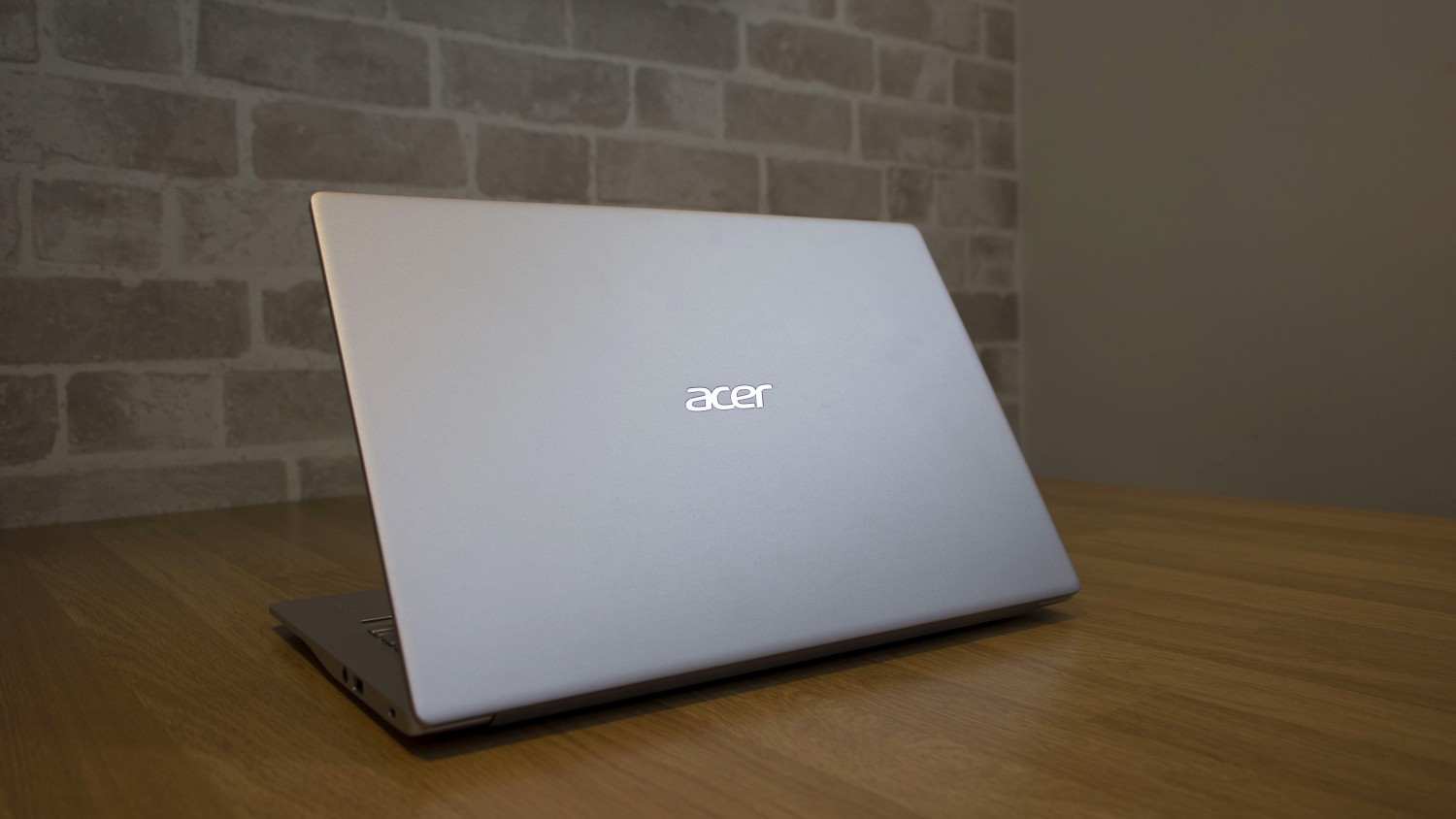
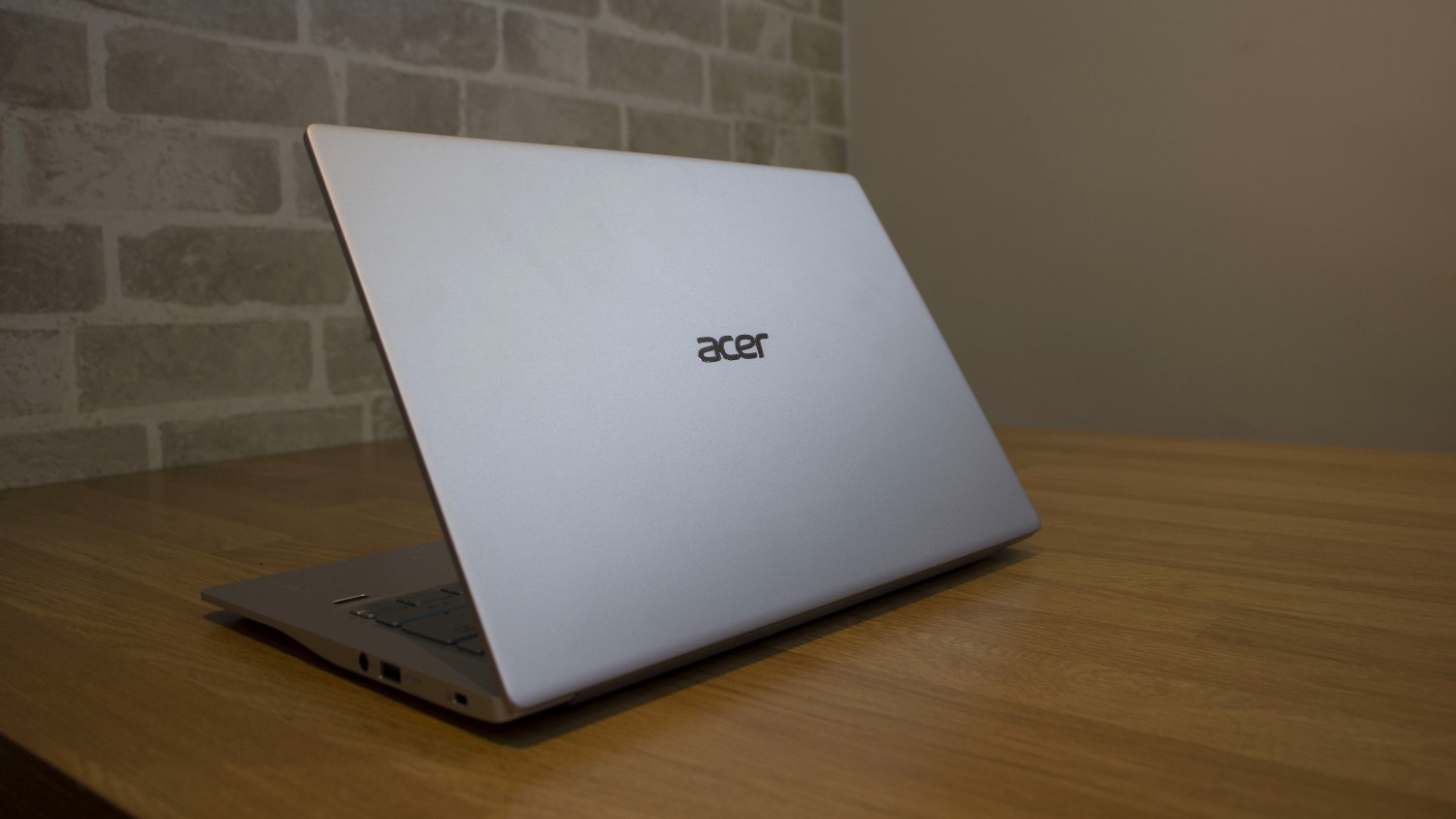
The Acer Swift 3 is an affordable machine that packs a surprising punch thanks to one of the best laptop CPUs around – a chip from AMD’s superb Zen 2 range.
The quad-core part offers tremendous power considering the Acer’s £666 exc VAT price, but the concentration on processing may mean this machine suffers elsewhere.
Acer Swift 3 (2020) review: Design
The Acer’s lid and chassis are made from plain aluminium alloy with a conventional tempered shape, and the only concession to better design is the Swift brand name that’s displayed on the angular hinge. At this price, underwhelming design is not a dealbreaker. The build quality is average, though; the base can be flexed too easily, and there’s a lot of movement in the keyboard deck. Pressing the rear of the display even results in a little distortion on the desktop. If you’re using the Acer at home, in the office or when commuting, it’s robust enough to survive – but sturdier machines are easy to find.
Acer’s machine weighs 1.2kg and is 18mm thick, and those dimensions are fine – decent enough for an affordable ultraportable. Elsewhere, the machine has a lip to open the lid, but it can’t be opened with one hand. Don’t expect much upgradeability, either – you can change the SSD but the memory is soldered to the motherboard.
These are areas where the Acer competes with its closest rivals – the £758 exc VAT Lenovo ThinkPad L14. That machine has classic ThinkPad looks and it’s sturdier than the Acer, but on the other hand, it does weigh a hefty 1.65kg. You could also look towards the Honor MagicBook Pro, which only costs £708 exc VAT. That machine looks better than the Acer, although it has a 16.1in screen so weighs more, tipping the scales at 1.7kg.
Acer Swift 3 (2020) review: Keyboard and trackpad
There are no surprises when it comes to the keyboard – there’s no numberpad, and the inclusion of the power button next to the Backspace key remains irritating.
The buttons are average, too. They’re not particularly large with only moderate travel, and the patchy build quality means there’s movement in the underlying metal. The buttons wobble a little too much, and the white backlight is uneven.
On a more positive note, the buttons are fast and they hammer down with a consistent action – they’re acceptable for everyday workloads. The trackpad is large, its smooth surface supports multi-touch gestures, and the two buttons are crisp. Build quality remains a concern here too, though – the pad feels rattly when you tap on its surface.

Lenovo’s ergonomic hardware is better. As with most devices in the ThinkPad family, its keyboard is top-notch and far more robust than the Acer’s typing unit, and it pairs a conventional trackpad with a bonus TrackPoint nubbin. The Honor machine is better here, too; its buttons are shallow but they feel crisper and more responsive than those on the Acer, and the MagicBook has a far larger trackpad.
Acer Swift 3 (2020) review: Display
The 14in IPS non-touch display comes with a 1080p resolution and an office-friendly matte coating. That’s fine for day-to-day work, although the 16:9 aspect ratio means there’s not a huge amount of vertical space compared to laptops like Microsoft’s Surface range, which use a 3:2 aspect ratio.
The Acer’s biggest issue comes in benchmarks. Its brightness level of 255cd/m2 is fine for indoor use but it’s not high enough to handle the great outdoors, and the Delta E of 5.22 is just average. The panel’s sRGB coverage ratio of 54.3% is downright poor, and it’s even worse in the Adobe RGB gamut. The screen isn’t particularly consistent either – it lost up to 20% of its backlight strength along its left-hand edge.
The contrast ratio of 1,417:1 is better, but that isn’t enough to help this display above mediocrity. While the contrast ratio does ensure the panel has reasonable vibrancy, the poor colour figures, wayward uniformity and lack of brightness mean it’s only really suitable for web-browsing, Office tasks and casual media duties – certainly nothing where colour breadth and accuracy is important.
The Lenovo machine has a similarly poor screen, while the MagicBook Pro has better colours but poorer contrast, despite the larger surface area. To get a significant improvement here you’ll have to spend more cash. Acer does produce some Swift 3 models with a 3:2 display that’s got a 2,256 x 1,504 resolution. You’ll get a crisper panel with more vertical space, but those machines cost at least £750 exc VAT and use last-gen Intel CPUs.

Acer Swift 3 (2020) review: Hardware & Performance
Speaking of hardware, the Ryzen 7 4700U is a low-power part, which means a cut-back specification – but there’s still plenty to like. The base clock of 2GHz is modest, but the chip peaks with a Turbo maximum of 4.1GHz. And while it doesn’t have multi-threading, it does have eight cores. There’s also an AMD Radeon Vega 7 graphics core, and the specification is completed by 8GB of dual-channel memory and a 1TB Samsung PM991 SSD.
In our single-threaded image-editing benchmark the Acer scored 165, and backed that up with 172 in video-editing and 187 in multi-tasking, delivering an overall score of 178. In Geekbench 5’s single- and multi-core tests the AMD chip scored 1,138 and 5,099 points.
They’re stunning results, and most rival CPUs just cannot compete. The Lenovo ThinkPad uses a Core i5-10210U CPU – a 10th Gen low-power chip – and it scored just 67 in those same tests. Low-power Core i7 processors from the same generation are around ten points faster. The popular, low-power i7-1065G7 was no quicker either.
Indeed, you’ve got to head towards newer or more muscular silicon to beat the Ryzen 7 4700U. Intel’s Core i7-1165G7 is a Tiger Lake low-power chip that scores around 1,500 and 5,500 points in Geekbench 5, and the older, more power-hungry i7-10750H delivers similar pace. Ultraportable laptops with the i7-1165G7 are at least £100 more than the Acer, and systems with the i7-10750H are pricier and heavier too. Given the minor gulf between the Acer’s low-power AMD chip and those Intel parts, that’s impressive.
The only way to get significantly more power is to make compromises: you’ll need to spend more or settle for a machine that’s larger and heavier than the Swift. The Honor MagicBook Pro, for instance, deploys an AMD Ryzen 5 4600H - a full-power mobile CPU. That laptop scored a huge 229 in our benchmarks, with an impressive result of 252 in the multi-tasking benchmark. Ryzen 7 chips will be faster still. For genuinely high-end mobile workloads, they’re the chips of choice.

The Ryzen’s in-built Vega graphics chipset scored 17,106 in the 3D Mark Cloud Gate test. That’s 10,000 points faster than the integrated GPUs in Intel U-series chips, and around 5,000 points beyond Intel’s Iris Plus graphics. Intel’s latest chips tout new Iris X graphics, but that part offers a near-identical score.
In real-world situations the Ryzen 7 4700U is impressive. It’ll handle day-to-day computing without any problems, and it ran dozens of browser tabs easily. It motors through photo-editing workloads, mainstream video-encoding and tough mathematical tasks without major problems and it’s better than Intel’s equivalents in multi-threaded scenarios. Intel’s latest chips are a little faster in single-threaded workloads, but the difference just won’t be noticeable in the majority of situations.
The whole system is aided by a capable SSD, too – its read and write scores of 2,338MB/sec and 1,564MB/sec aren’t record-breakers, but they keep the Swift feeling snappy. It’s an impressive thermal performer, to boot – no matter the task, the internals and exterior remain cool, and fan noise is minimal.
Battery life is less impressive, sadly, and in our battery test the Acer lasted for a middling 8hrs 4mins. By comparison, Honor’s 16.1in machine lasted for more than nine hours despite more powerful hardware and a larger display. That Lenovo ThinkPad lasted for three hours more, and it’s not unusual to find pricier machines that last twice as long. You’ll only get a full working day out of the Swift if you’re extremely careful.
Acer Swift 3 (2020) review: Ports and Features
Happily, the Acer has a solid set of connectivity features, including dual-band WiFi 6, Bluetooth, TPM 2.0 and a fingerprint reader, as well as a USB 3.2 Gen 2 port with 10GB/sec of bandwidth alongside a USB-C port that supports DisplayPort and charging.

There’s plenty missing, though. The second full-size USB port only uses sluggish USB 2.0, and there’s no Gigabit Ethernet. The 720p webcam has mediocre quality, no Windows Hello support and no privacy shutter, and there’s no card slot or Thunderbolt. None of this is a surprise given the Acer’s price, but it still may preclude the Swift from working well in your business.
Bloatware is rife, too: there are links to Acer’s websites everywhere, and you’ve got to put up with apps like Dropbox, ExpressVPN, Evernote, Groove Music, Netflix, PhotoDirector and more already installed.
The speakers are nothing special, either. They’ve got moderate volume, little bass and tinny high-end noises. They’re fine for basic and background music and media, but nothing more.
Acer Swift 3 (2020) review: Verdict
The bloatware and the missing features are symptomatic of the Swift, which is mediocre in several areas – the screen, build quality and design are all underwhelming, and the keyboard and battery are middling. All of these issues could be rectified if you’re willing to spend a little more or sacrifice some CPU power. In a handful of areas, the Lenovo and Honor machines are better than the Acer without costing much more.
On the other hand, the inclusion of AMD’s Ryzen 7 4700U deservedly dominates this machine, and it provides vastly more CPU power than anything else at this price and size. If you need lashings of compact processing power without spending loads, few laptops are better.
Acer Swift 3 (2020) specifications
| Processor | 2GHz AMD Ryzen 7 4700U |
| RAM | 16GB LPDDR4 |
| Graphics | AMD Radeon RX Vega 7 |
| Storage | 1TB Samsung PM991 SSD |
| Display | 14in 1,920 x 1,080 IPS |
| Operating System | Windows 10 Pro 64-bit |
| Connectivity | Dual-band 802.11ax WiFi, Bluetooth 5.0 |
| Ports | 2 x USB 3.2 Gen 2 Type-C/DisplayPort, 1 x USB 3.2 Gen 2 Type-A, 1 x USB 2.0, 1 x HDMI |
| Dimensions | 323 x 219 x 18mm (WxDxH) |
| Weight | 1.2kg |
| Warranty | 1yr RTB |
Get the ITPro daily newsletter
Sign up today and you will receive a free copy of our Future Focus 2025 report - the leading guidance on AI, cybersecurity and other IT challenges as per 700+ senior executives
Mike Jennings has worked as a technology journalist for more than a decade and has been fascinated by computers since childhood, when he spent far too long building terrible websites. He loves desktop PCs, components, laptops and anything to do with the latest hardware.
Mike worked as a staff writer at PC Pro magazine in London for seven years, and during that time wrote for a variety of other tech titles, including Custom PC, Micro Mart and Computer Shopper. Since 2013, he’s been a freelance tech writer, and writes regularly for titles like Wired, TechRadar, Stuff, TechSpot, IT Pro, TrustedReviews and TechAdvisor. He still loves tech and covers everything from the latest business hardware and software to high-end gaming gear, and you’ll find him on plenty of sites writing reviews, features and guides on a vast range of topics.
You can email Mike at mike@mike-jennings.net, or find him on Twitter at @mikejjennings
-
 ‘Phishing kits are a force multiplier': Cheap cyber crime kits can be bought on the dark web for less than $25 – and experts warn it’s lowering the barrier of entry for amateur hackers
‘Phishing kits are a force multiplier': Cheap cyber crime kits can be bought on the dark web for less than $25 – and experts warn it’s lowering the barrier of entry for amateur hackersNews Research from NordVPN shows phishing kits are now widely available on the dark web and via messaging apps like Telegram, and are often selling for less than $25.
By Emma Woollacott Published
-
 Redis unveils new tools for developers working on AI applications
Redis unveils new tools for developers working on AI applicationsNews Redis has announced new tools aimed at making it easier for AI developers to build applications and optimize large language model (LLM) outputs.
By Ross Kelly Published
-
 Google layoffs continue with "hundreds" cut from Chrome, Android, and Pixel teams
Google layoffs continue with "hundreds" cut from Chrome, Android, and Pixel teamsNews The tech giant's efficiency drive enters a third year with devices teams the latest target
By Bobby Hellard Published